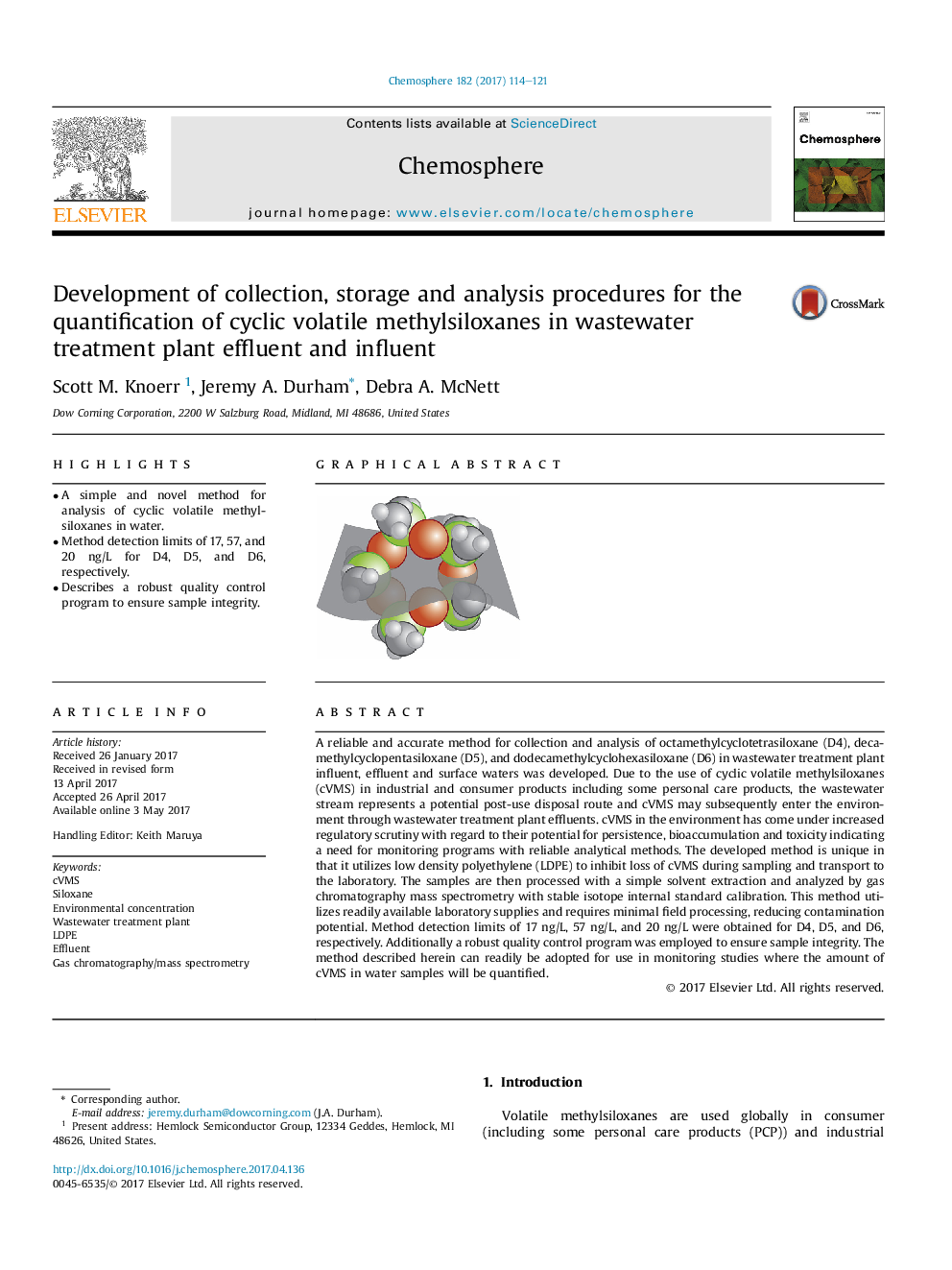| کد مقاله | کد نشریه | سال انتشار | مقاله انگلیسی | نسخه تمام متن |
|---|---|---|---|---|
| 5746878 | 1618789 | 2017 | 8 صفحه PDF | دانلود رایگان |
- A simple and novel method for analysis of cyclic volatile methylsiloxanes in water.
- Method detection limits of 17, 57, and 20Â ng/L for D4, D5, and D6, respectively.
- Describes a robust quality control program to ensure sample integrity.
A reliable and accurate method for collection and analysis of octamethylcyclotetrasiloxane (D4), decamethylcyclopentasiloxane (D5), and dodecamethylcyclohexasiloxane (D6) in wastewater treatment plant influent, effluent and surface waters was developed. Due to the use of cyclic volatile methylsiloxanes (cVMS) in industrial and consumer products including some personal care products, the wastewater stream represents a potential post-use disposal route and cVMS may subsequently enter the environment through wastewater treatment plant effluents. cVMS in the environment has come under increased regulatory scrutiny with regard to their potential for persistence, bioaccumulation and toxicity indicating a need for monitoring programs with reliable analytical methods. The developed method is unique in that it utilizes low density polyethylene (LDPE) to inhibit loss of cVMS during sampling and transport to the laboratory. The samples are then processed with a simple solvent extraction and analyzed by gas chromatography mass spectrometry with stable isotope internal standard calibration. This method utilizes readily available laboratory supplies and requires minimal field processing, reducing contamination potential. Method detection limits of 17Â ng/L, 57Â ng/L, and 20Â ng/L were obtained for D4, D5, and D6, respectively. Additionally a robust quality control program was employed to ensure sample integrity. The method described herein can readily be adopted for use in monitoring studies where the amount of cVMS in water samples will be quantified.
138
Journal: Chemosphere - Volume 182, September 2017, Pages 114-121
